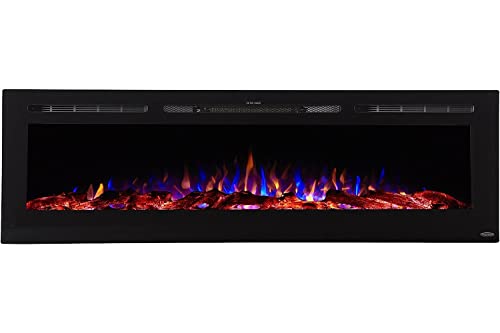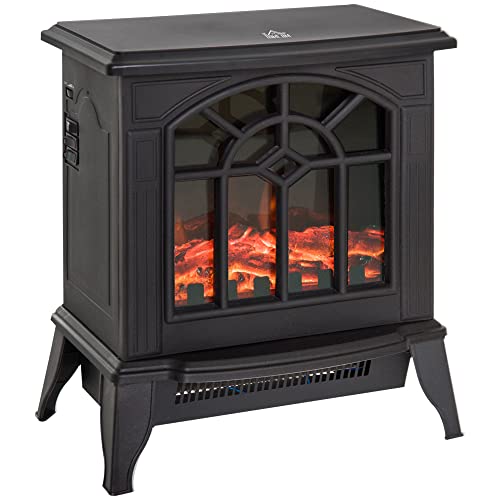How to Get the Most From a Wood Burner Fireplace
In contrast to traditional open fireplaces, wood stoves are designed and optimised to burn firewood. This allows them to meet stricter emission regulations.
Wood burning stoves emit dancing yellow flames and cosy crackling sounds. They also provide an incredibly warm feeling. The smoke that is produced contains toxic air pollutants like formaldehyde, benzene, and polycyclic aromatic hydrocarbons.
Efficient
Fireplaces and stoves made of wood are not only beautiful, but also extremely efficient. A top-quality wood stove can have an Ecodesign rating up to 77 percent. It is vital to get the most value of your log burner in light of rising energy costs. The good news is it's now easier than ever before to do!
A key factor in the efficiency of a wood-burning stove can be will be the water content of the wood. We recommend using only dried and seasoned wood that has dried for at least one year and often two years. The more dry the wood is and the more efficient it is to burn. This means less smoke and less harmful emissions.
Another benefit of a wood-burning stove is that it's a low carbon source of fuel, which is great for the environment. If you buy locally-sourced wood, you are also helping to support the active conservation and management of woodlands. This is beneficial for wildlife.
The only thing that a wood burning stove needs in terms of maintenance is to take away and eliminate ash. It's a bit of a hassle however it is worth it to get the best heat out of every log. Furthermore, if you wait 2-3 days for the ashes to fully cool and then reuse them to make an eco-friendly and non-toxic ice melt. They can be used to polish jewelry or absorb odors.
A fireplace with a wood burner is a truly timeless classic. Although they're less well-known than gas fireplaces, the allure and charm of a roaring flame cannot be disregarded. They're great for snuggling up to on cold nights and are a perfect way to create an inviting and warm space inside your home. Make sure you invest in a high-quality wood stove and you'll start benefiting for many years to be! Call us today to learn more about how our expert chimney sweeps can assist you in getting the most out of your stove.
Low Carbon
Wood burners that are efficient and clean are the most efficient method to save money while keeping your house warm. They also support local woodland management. This is an excellent method to support wildlife in your local area.
Fireplaces and wood-burning stoves cause very little pollutant if they are properly maintained and are used with dry, seasoned and dry firewood. However, when they are not well maintained or used with poor quality wood the smoke generated by them is contaminated with fine particles (known as particulate pollution) that can cause irritation to the lungs and other organs. Carbon monoxide, toxic air pollutants such as formaldehyde and benzene and polycyclic aromatic hydrocarbons are also found in. Inhaling this kind of air pollution could cause irritation of the lungs as well as wheezing, coughing, and asthma attacks and may even lead to serious health issues such as cancer, heart disease, or premature death.
Many people are concerned that using a wood burning stove could contribute to climate change, but this is not necessarily true. Wood burning produces energy that is carbon-neutral. Throughout the lifetime of a tree, it absorbs carbon dioxide and when it is burned, the carbon dioxide absorbed is released back into the atmosphere.
The wood is local, which decreases the amount of pollution released during transportation. It is also essential to use high quality woods that are seasoned and seasoned as they will have an extended and more consistent burn than softwoods.
Modern wood stoves, such as the ones manufactured by Charlton & Jenrick, emit less carbon dioxide than older stoves. They have been certified to meet 2020 EPA standards, which are considerably more stringent than the earlier emission limits.
All wood burning stoves should be fully vented to the outside of your property to ensure that they do not create a haze of exhaust within your home. By keeping the flames away from the logs and ensuring that you make use of dry, seasoned wood, all of our current clean burn and DEFRA exempt stoves produce extremely clear exhaust and have particulate levels that are 60 percent or less below the DEFRA limit.
A wood-burning stove with a hybrid unit or catalytic converter could be the best low carbon heating option. These units ignite the particulates and gases from the initial combustion in a subsequent stage by mixing them with superheated air. The remaining gasses and particulates are transferred to a catalytic unit to create a final and third combustion. This further reduces emissions to levels that are below government standards.
Clean Burn
Cleanburn wood stoves are engineered to burn fuel with the greatest efficiency that is possible. This means that there are fewer particles emitted into the atmosphere when burning wood. The stove's air management system regulates the intake and exhausting of gases, ensuring that the combustion process is conducted in a closed, controlled environment. It also regulates the flame's height to maximize heat output and minimise emissions.
This means that your chimney and its surroundings will be cleaner than older stoves. Particulate matter (also known as particle pollution) caused by incomplete combustion of wood can cause respiratory problems like coughing and wheezing in people and contributes to the development of heart disease, stroke, diabetes and other serious health problems. Wood burning also contributes to poor air quality in cities.
Smoke from poorly burned timber is a source of fine particulate pollutants as well as harmful air pollutants such as carbon monoxide, as well as other dangerous air pollutants, such as nitrogen oxides, volatile organic compounds (VOCs) as well as benzene and formaldehyde. These particles can reach deep into the organs of the lungs and cause discomfort, damage and even death. Dust particles from the air can also damage the surfaces of your home, and can give the impression of a rough surface to rooms.
If you're using a fireplace with wood burning it is important to make use of high-quality firewood that has been seasoned and dried. Hardwoods like oak beech, ash, and ash are the best choice for heating. Hardwoods have a higher density and BTU content and they offer more heat than softwoods.
Check with your local authority to find out whether they have any regulations about wood burning. These rules may include rules on odors and nuisances and visible emissions or smoke opacity limitations.

If you have a wood burner with a glass door, it's important to keep the glass free of grime and deposits. This can be done using dry cloths or oven cleaner spray. Alternately, you can add bicarbonate of soda with a little water to the glass.
Regular maintenance of your chimney and stove is also vital. This includes regular chimney cleanings to eliminate creosote and ensure the proper functioning of the flue. You should also mark the dates of periodic inspections on your calendar. This will allow you prevent costly repairs and extend your wood burner's life.
Low Maintenance

Many people prefer installing wood burning Fireplaces Wood (
Https://Galbraith-Rosenthal.Blogbright.Net/) because of the natural warmth they create. This kind of
freestanding fireplace requires a bit of maintenance and upkeep. If not cleaned and maintained regularly the chimney, flue and stove can all be fire hazards in your home.
wooden fireplaces are also an excellent source of heat when power is out, especially in winter when snow storms can cause tree branches to fall and rip up power lines.
When you use a wood stove to heat your home, you will reduce your carbon footprint as compared to other fossil sources of energy like gas.
modern fireplace wood stoves, inserts, and fireplaces are designed to meet EPA standards (Environmental Protection Agency), which means they produce very little emissions. The more well-seasoned wood that you use, the more efficient the stove will be. You'll need less wood to generate the same amount of heat.
Fireplaces require some maintenance and care. They should be placed away from combustible material and have a screen. The flow of air will be improved by keeping the grate clear of ash and other debris. This will help keep the fire burning longer and your home in good order. It is recommended that your stove and chimney cleaned at least twice per year to avoid creosote accumulation which could create an extremely dangerous fire hazard as well as a blockage that can hinder the flow of air.
It could take a while for homeowners who are new to the area to learn how to light, ignite and maintain a steady fire in the
fireplace suite. Once you've learned the art, your wood burning stove will be an excellent source of warmth and comfort within your home.
Wood burning fireplaces are around in one form or another for over 500 years. They've gained a lot of attention because of their efficiency, sustainability and the natural warmth that comes from wood. If you're thinking about buying a new heater, talk with your local certified Regency dealer to find out more about the benefits of an insert or stove made of wood for your home.